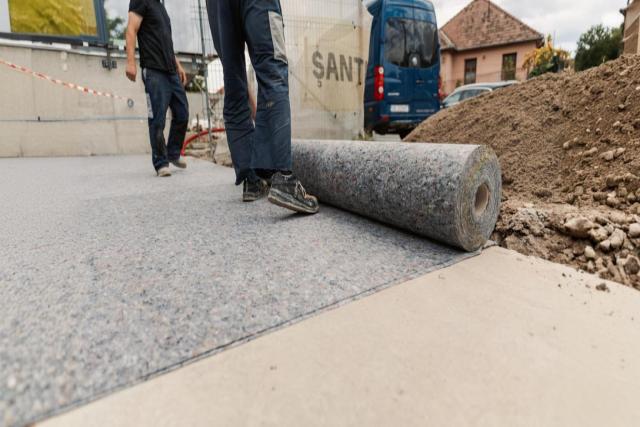
Geotextile fabrics have traditionally been an important material in civil engineering, construction, and environmental management. These materials, traditionally used in soil reinforcement, drainage systems, and erosion protection, have seen an unprecedented breakthrough over the past few years. Geotextiles are becoming increasingly effective and flexible, providing fresh opportunities for eco-friendly growth.
Advances in material technology
Probably the most impressive development in geotextiles has been in the materials themselves. Early geotextiles consisted predominantly of synthetic polymers such as polypropylene and polyester. They are effective, but are lacking in strength, environmental durability, and resistance to complex loading conditions. More recent developments have been focused on the manufacture of geotextiles using high-performance fibers such as aramid and carbon fibers. In addition, biodegradable geotextiles have opened the way for sustainable engineering applications and environmental protection. These products, made from organic fibers like coir, jute, or biodegradable polymers, break down over time and minimize long-term environmental effects. They can be used in short-term applications or erosion control for short durations, where sustainability and environmental protection, are the most important factors.
Increased Durability and Lifespan
The most crucial variable in determining the performance of geotextiles in civil engineering applications is durability. Treatments and coatings of materials have changed considerably, leading to increased life of the material. Developments in UV stabilization processes, for instance, have significantly increased geotextile durability and solar degradation resistance.
The treatments against UV ensure that geotextiles remain intact and effective even after years of exposure outdoors, reducing the renewal requirements and improving the project’s cost-effectiveness. Another significant advancement in the civil engineering sector is the manufacture of geotextiles with increased chemical resistance. These geotextiles are made chemical-resistant against aggressive chemicals such as acids, alkalis, and oils, making them suitable for use in a variety of challenging engineering environments.
Increased Permeability and Functionality
Geotextiles play a critical role in the regulation of water flow in many applications including drainage, filtration, and erosion control. Water management systems have become more efficient through geotextile permeability innovations. Advances in new weaving technologies and fiber architectures brought forward now offer controlled permeability such that geotextiles can drain and filter water efficiently without causing soil particle loss.
For instance, spun-bonded and needle-punched geotextiles are now able to offer better drainage even when they are saturated. These geotextiles are now being used in stormwater management systems and are more effective at mitigating flooding and soil erosion. In addition, 3D woven geotextiles with intricate designs are now being employed in certain drainage applications where water has to flow through many layers or advanced systems.
Advancements in Engineering
The increased versatility of geotextiles allows them to be applied for more sophisticated technical purposes. Geotextiles are used more in green roofs, reinforcement of soil, and shoreline protection. Geotextiles find application in the reinforcement of soil to enhance stability in slopes and embankments, thereby avoiding landslides and erosion. In coastal engineering, geotextiles are used in novel applications for wave action protection of the shoreline, limiting erosion while enabling natural sediment processes to take place.
Geotextiles industry also find important roles to play in the stabilizing of ground beneath solar panels and wind turbines in the field of renewable energy. Geotextile products are always evolving with new technology, increasing the locations and methods of geotextile use in today's environmental and engineering applications. Stronger, porous, and chemically designed, geotextiles become more versatile, effective, and ecological with every advance. More demands for environmental services and advanced engineering products are emerging, and geotextiles are setting the development rate, tomorrow being stronger against failure and unpredictability.
Sources:
Company: Textile Inside
Research org: Science Direct, Research Gate






